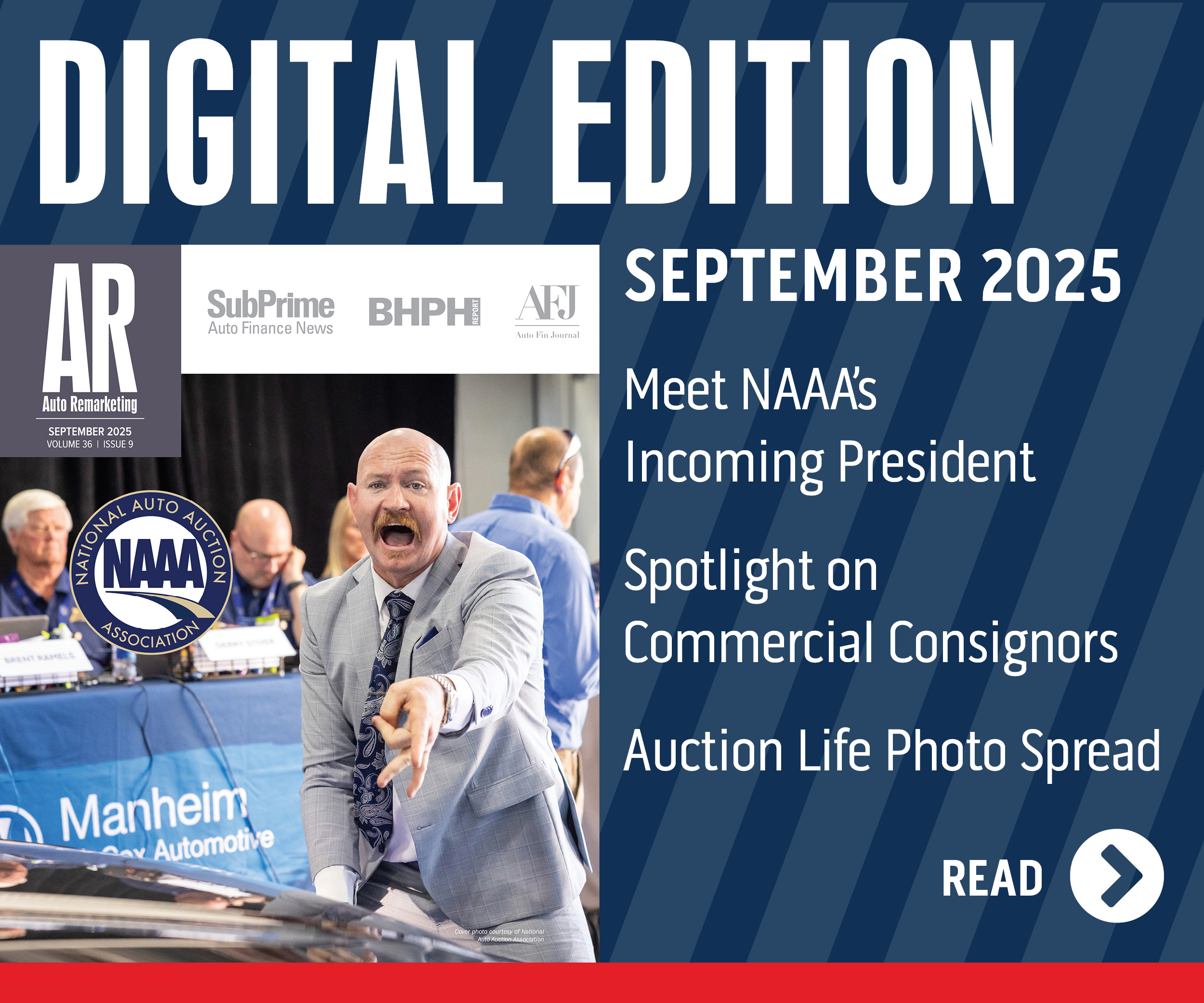Hallett Pinpoints Financial Impact to Insurance Auto Auctions in Navigating Sandy Salvage Aftermath

On the same day insurance officials came out with revised damage estimates, KAR Auction Services chief executive officer Jim Hallett certainly had the numbers to back up an assertion that Superstorm Sandy was the most catastrophic event in the history of Insurance Auto Auctions.
Because of additional equipment and manpower as well as logistical obstacles IAA encountered to process more than 50,000 total-loss vehicles, IAA expects to suffer an overall loss of $20 million. Hallett told analysts about the details on Thursday as KAR discussed its fourth-quarter and full-year performance.
In the fourth quarter alone, Insurance Auto Auctions took a non-recurring pre-tax net loss of $9.1 million related to the processing of Sandy vehicles. Later this year, the company expects that loss figure to balloon to $20 million.
“From our viewpoint, I say it was the perfect storm in the worst of ways,” Hallett said. “We were dealing with the most dense, heavily populated area of the country, the most difficult infrastructure when you think about the bridges and parkways and access to move vehicles and also some of the most expensive real estate in the country.”
IAA acquired 400 acres to store, manage and sell these salvage vehicles. Hallett mentioned photographs that circulated worldwide on the Internet of how the company turned two runways at Calverton Airport on Long Island to handle 20,000 vehicles.
Just getting those units to a processing location was steep challenge, according to Hallett.
“It wasn’t easy dealing with the regulators as they made it very difficult for outside transporters to come into the state of New York and haul vehicles,” he said. “In many cases, we would expect a hauler to haul six to seven vehicles a day, and we were lucky to get two vehicles hauled a day.”
To expedite the process, KAR tapped its CarsArrive network of trucks and drivers, pulling in personnel from places as far away as Florida, Alabama, Mississippi, Louisiana and Texas.
The company also had to purchase 40 loaders to work at 14 additional sites in New York and New Jersey. KAR also secured technology so IAA could not only properly process the salvage units but also conduct sales over the Web.
“The good news is a substantial amount of the resources deployed in New York and New Jersey will be relocated to other sites once we are done processing the Sandy cars,” KAR executive vice president and chief financial officer Eric Loughmiller said.
KAR projected that IAA should be finishing the sale of Sandy-damaged salvage vehicles by the middle of the year.
The best comparison Hallett could draw between any past event and what IAA encountered in the aftermath of Sandy was how the company navigated through Hurricane Katrina in 2005. However, the CEO gave a list of attributes of both events to show how much more intense Sandy’s impact was.
The company secured 110 acres of land to process Katrina-damaged vehicles but needed more than 400 to handle Sandy units. KAR brought in 50 additional haulers to gather Katrina cars. For Sandy units, the company deployed 600 added haulers.
Hallett also noted IAA was inundated with 10 times the amount of assignments three weeks after Sandy hit the New York City region just before Halloween of last year than when 21 days elapsed after Katrina ravaged the Gulf Coast in late August of 2005.
“Everything was just on steroids,” Hallett said. “It was just a lot more coming at us a lot faster and people expecting us to react in much more expedited manner.”
Insurance Auto Auctions indicated that it sold about 10,000 salvage units damaged by Sandy through the end of the year. Hallett touched on the kinds of vehicles IAA is moving as well as the buyers of these units.
“In many cases, when you think about that New York, New Jersey area, we’re dealing with some very high-end vehicles. The prices for these flood cars have been above what we would normally see for salvage vehicles,” Hallett said.
“You’ve got rebuilders, your recyclers. Obviously you’ve got your foreign buyers. I think it’s just consistent distribution to all these different constituents that buy salvage vehicle,” he continued. “I don’t think there is any one group who is more focused on buying these vehicles than another.”
Revised Sandy Damage Estimates
Also on Thursday, the National Insurance Crime Bureau announced revised estimates for the number of vehicles damaged as a result of Sandy.
The current estimate of vehicles damaged as a result of Sandy is now set at 250,500 based on claims processed by insurance companies. New York’s number increased from a previous level of 130,000 to 150,000.
This is the complete list of states generating Sandy-related vehicle damage claims in descending order:
—New York: 150,000
—New Jersey: 60,000
—Connecticut: 8,000
—Maryland: 5,500
—Massachusetts: 5,000
—Virginia: 4,500
—Ohio: 4,000
—Pennsylvania: 4,000
—Delaware: 2,000
—New Hampshire: 2,000
—North Carolina: 1,500
—District of Columbia: 1,000
—Rhode Island: 1,000
—West Virginia: 1,000
—Maine: 500
—Vermont: 500
—Total: 250,500
NICB indicated it is important to note that these are preliminary figures and may change as additional claims are received and processed.
“Also, these are insured losses only,” officials said. “There are certainly many uninsured vehicles that were damaged by Sandy and those numbers are not reflected in this information. Moreover, there is no determination as to the extent of damage to these vehicles. They could have sustained minor paint scratches from flying debris, or have been under water for days and rendered total losses.
“By now there could be many Sandy damaged vehicles that are in the process of being reconditioned and sold to unsuspecting consumers all across the country,” NICB added. “It is not illegal to buy or sell flood vehicles, or vehicles declared as salvage as long as the parties to the sale are aware of the vehicle’s status.
“Consumers should be aware that severely damaged vehicles may appear advertised for sale without any indication that they were at all affected by Sandy. As always, buyers should be careful when considering a used vehicle purchase in the weeks and months following a disaster such as Sandy,” the bureau went on to say.
Later during the company’s call, Loughmiller emphasized the role Insurance Auto Auctions plays in cleaning up the mess a storm of Sandy’s magnitude leaves.
“By buying through the salvage auctions, it’s a highly regulated process,” Loughmiller said. “The titles are marked. We feel the salvage industry protects the public. The reported number of Sandy cars is more than double what the salvage industry will process. I would focus more on the ones that aren’t running through our auctions and where they’re going. Ours are professional registered dealers who have licensing requirements and they know what they can and cannot do with those vehicles.”
Nick Zulovich can be reached at nzulovich@autoremarketing.com. Continue the conversation with Auto Remarketing on both LinkedIn and Twitter.


